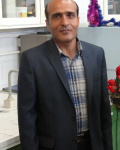| Authors | عاطفه کرمی - رزیتا منصف -Israa Taha Ibrahim -Hadeel Luay Kareem -Ibrahem Waleed - مسعود صلواتی نیاسری |
|---|---|
| Journal | International Journal of Hydrogen Energy |
| Paper Type | Original Research |
| Published At | 2022-12-21 |
| Journal Grade | ISI |
| Journal Type | Electronic |
| Journal Country | United Kingdom |
| Journal Index | SCOPUS ,JCR |
Abstract
The subject of treatment of real or synthetic industrial effluents and photocatalysts has concerned a lot of consideration from scientists. Among the diverse metal oxide photocatalytic materials, the narrow bandgap compounds are of superior significance owing to appropriate efficiency in the optical application. In this work, we produced pristine ErVO4 through the microwave-assisted synthesis method. Diverse solvents and different power intensities have been employed in this preparation for size controlling and shape engineering, such as Ethylene glycol (EG), Propylene glycol (PG), and Polyethylene glycol (PEG400) and power of 900, 750 and 600 W. XRD, FT-IR, and EDS analysis have been utilized to demonstrate the phase purity, and FE-SEM and TEM were employed to discover the shape of resultant ErVO4. The several attributes of the samples, such as the surface area, magnetic and optical features, were inquired by BET, VSM and DRS techniques, correspondingly. Microwave power of 900 W and Ethylene glycol solvent was selected as an optimal condition owing to the creation of uniform nanosized particles. So nanostructured ErVO4 was operated as a catalyst for the decolorization of colored pollutants (Erythrosine (ER), Methyl Orange (MO), and methylene blue (MB)). According to the discoveries, the MB with higher photocatalytic efficiency was compared in different dye concentrations and catalyst loading experiments to attain ideal performance.
